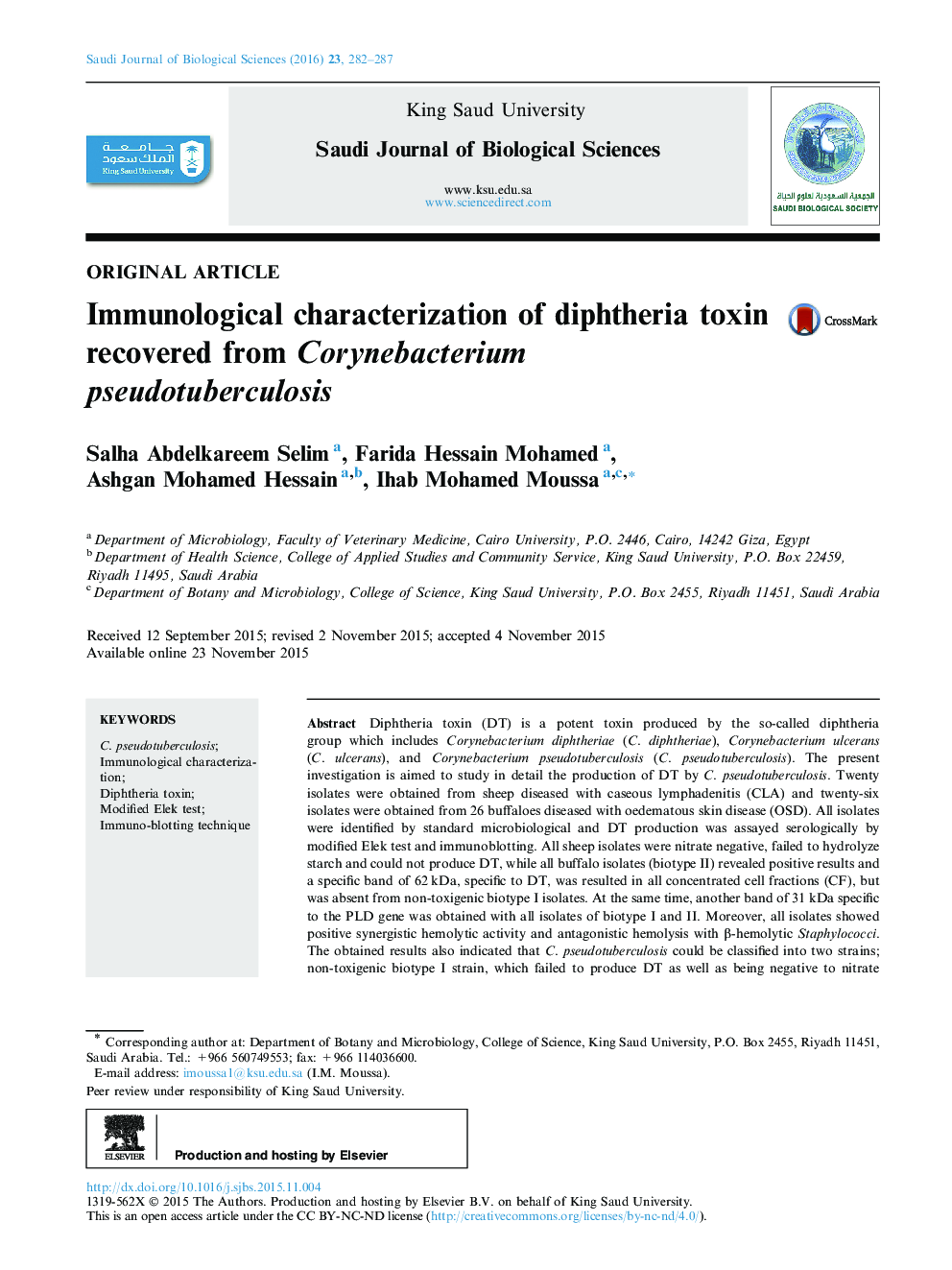| Article ID | Journal | Published Year | Pages | File Type |
|---|---|---|---|---|
| 4406181 | Saudi Journal of Biological Sciences | 2016 | 6 Pages |
Diphtheria toxin (DT) is a potent toxin produced by the so-called diphtheria group which includes Corynebacterium diphtheriae (C. diphtheriae), Corynebacterium ulcerans (C. ulcerans), and Corynebacterium pseudotuberculosis (C. pseudotuberculosis). The present investigation is aimed to study in detail the production of DT by C. pseudotuberculosis. Twenty isolates were obtained from sheep diseased with caseous lymphadenitis (CLA) and twenty-six isolates were obtained from 26 buffaloes diseased with oedematous skin disease (OSD). All isolates were identified by standard microbiological and DT production was assayed serologically by modified Elek test and immunoblotting. All sheep isolates were nitrate negative, failed to hydrolyze starch and could not produce DT, while all buffalo isolates (biotype II) revealed positive results and a specific band of 62 kDa, specific to DT, was resulted in all concentrated cell fractions (CF), but was absent from non-toxigenic biotype I isolates. At the same time, another band of 31 kDa specific to the PLD gene was obtained with all isolates of biotype I and II. Moreover, all isolates showed positive synergistic hemolytic activity and antagonistic hemolysis with β-hemolytic Staphylococci. The obtained results also indicated that C. pseudotuberculosis could be classified into two strains; non-toxigenic biotype I strain, which failed to produce DT as well as being negative to nitrate and starch hydrolysis, and toxigenic biotype II strain, which can reduce nitrate, hydrolyze starch as well as produce DT.
